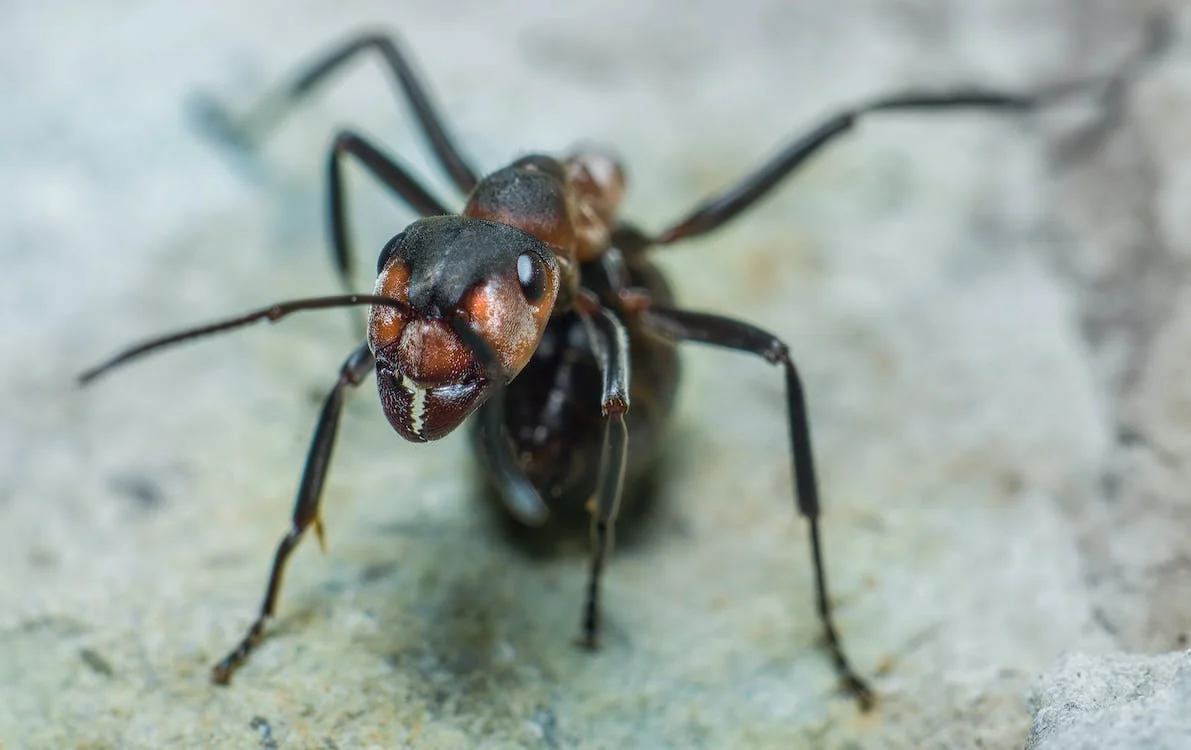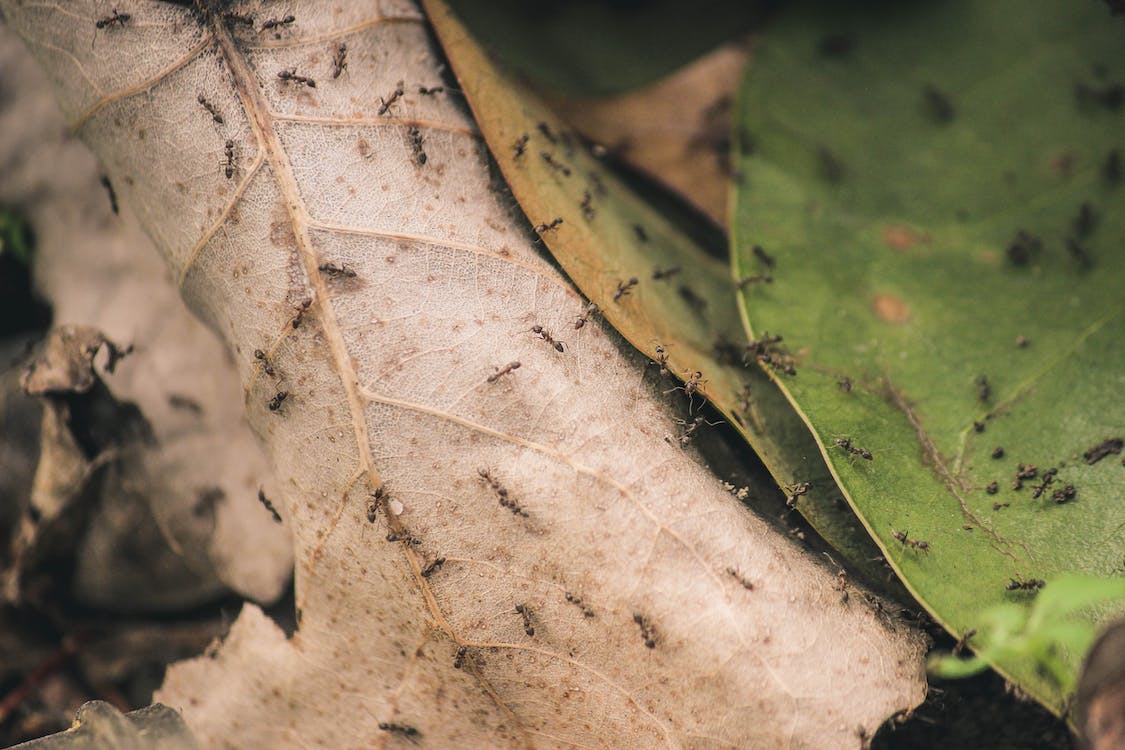Ants belong to the Formicidae family of insects. Depending on the species, they can be as small as 2 mm or as large as 25 mm in length. A narrow band runs through the center of an ant’s body, connecting its three distinct parts (the head, thorax, and abdomen). Ants have a six-legged body with two antennae.
Ants can be found almost everywhere on the planet, with the exception of Greenland, Iceland, Antarctica, and a few small island nations. Decomposing plants or mounds of soil and leaves are where they prefer to live.
What is ant bite?
Pinching human skin is done with the ant’s mandibles and mouth. The stinger, which is only seen in female ants, is tucked down near the base of the abdomen. Venom is delivered to the victim by the stinger of a fire ant (which is immediately painful). Another ant species that does not sting or bite is the formic acid-spraying ant. This makes it difficult to estimate the prevalence of ant bites, as many occurrences of ants attacking humans go unreported. Insect bites are widespread, especially in locations where ants are prevalent. People are more likely to suffer an allergic reaction from fire ants in the southern United States, where the weather conditions are optimal for their growth and development.
Formic acid is released into your skin when an ant bites you. An ant bite generates symptoms of acid release in addition to the squeeze from the mandibles. Formic acid, found in ants, is known to trigger allergic reactions in some people. These reactions can spread well beyond the site of the bite.
Similar to ant bites, ants inject poison into your body when they sting. Venom creates symptoms in your body even with a small amount.
What are the types of ant bites?
There are over 12,000 different types of ant species in the world, and they are all social creatures that stick together in colonies (colonies that are similar to bees). Some ants are harmless to humans, while others are capable of biting or stinging in defense. The following are some of the more commonly encountered stinging and biting ants:
• Fire Ant: Fire ants, which are venomous and aggressive, are commonly found in the southern United States. Insects that look like fire ants are red or black, with a stinger on the bottom of their abdomens. The sting of a fire ant releases a venom that resembles a burning sensation, giving the ant its name. Due to the color of fire ants, some people call them “red ants.”
• Carpenter Ant: Pest control specialists describe them as being about 1/2 inch to 5/8 inch long, with stingers on the top of their heads. Although carpenter ants are typically black, the species can be found in a wide range of colors. Carpenter ants are known as such because they build their nests in wood and prefer to live in areas that are moist or damp, which is why they are known as such.
• Flying Ant: To increase the size of their colony, the queen ant will produce flying ants for mating purposes. There are flying ants in every ant colony, including those of carpenter and fire ant species. In the late spring and early summer, when the weather is warm and humid, flying ants will emerge. When flying ants feel threatened and need to defend themselves, they can sting or bite, but they don’t pose a threat to humans unless they are disturbed.
• Sugar Ant: If you’re having a picnic on a hot summer day, watch out for the sugar ant (Camponotus consobrinus). Sugar ants range in size from 2 millimeters to 15 millimeters and male ants are black while female ants are orange.The pinchers on the head of a sugar ant can be used to defend itself if it feels threatened. It is possible to have an allergic reaction to sugar ant bites, which are not painful.
Why do ants bite?
When threatened, ants use jaws and pinchers on their heads or stingers on the bottoms of their bodies to defend themselves. Ants, for the most part, pose no danger to humans.
The chemical formic acid is released into your skin when an ant’s pinchers grab your skin. An allergic reaction may occur if the ant bites someone who is sensitive to formic acid.
Insects can sting and inject venom into your skin if they’re aggressive enough. Ant stings are extremely painful.
Anyone can be stung by an ant. People who enter an ant’s habitat are at risk of ant bites and stings. For example, if you stepped barefoot on an ant mound, this could happen unintentionally (an ant colony home). Ants sting or bite to defend themselves when they feel threatened.
How to treat an ant bite?
Treatment is available if ant bites cause you discomfort, but they are usually self-healing and don’t require it. Unless your symptoms are severe, you can get the majority of the treatment you need at home with only a brief office visit.
If you’ve been stung or bitten by an ant, wash the affected area right away with antibacterial soap and water to avoid infection.
How long do ant bites hurt?
For the most part, ant bites go away within a few days. Fire ant stings last longer if they release more venom into your skin. A fire ant sting usually takes three to seven days to go away and make you feel better. Contact your healthcare provider if you don’t feel better within a week to ten days.
What can I do to lessen my chances of being bitten by an ant?
- Protect yourself from ant bites by wearing protective clothing like closed-toe shoes, long pants, gloves, and high socks when you’re in an area where ants live.
- Ant mounds and other ant-infested areas should be avoided at all costs.
- Use an insect repellent when going outside. DEET and picaridin are just two of the many types of insect repellents on the market. Inquire about the best type of medication from your doctor.
- In order to avoid ant mounds, it is important to know what they look like and where they can be found.
- You should call a pest control company if ants infest your home or property.
Conclusion
Because of this, most ants aren’t dangerous to people unless their nest is disturbed. Find out what kinds of ants are most common where you live and call a pest control company if you see an unusually large number of them in or around your house. You should seek medical attention if you suspect an allergic reaction to an ant bite and treat the bite as if it were a wound.

